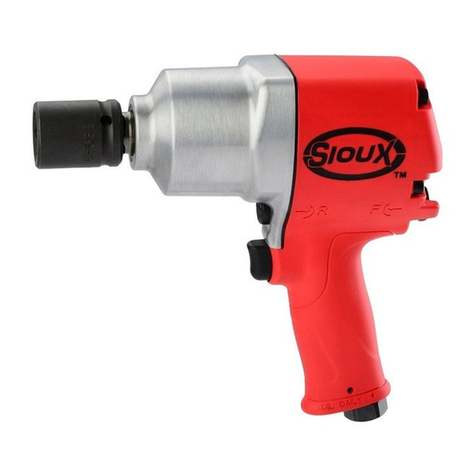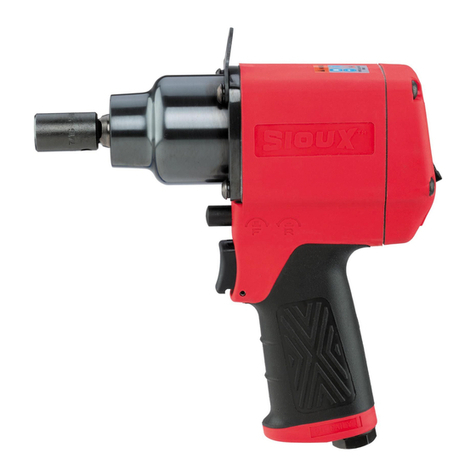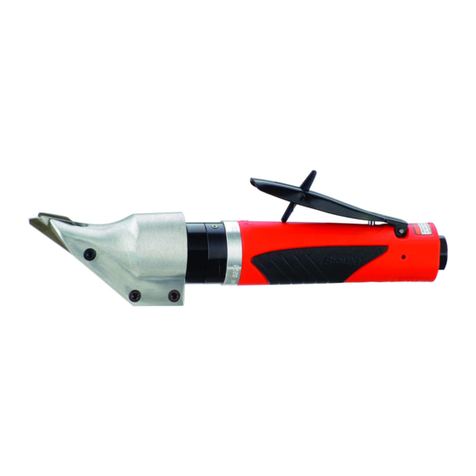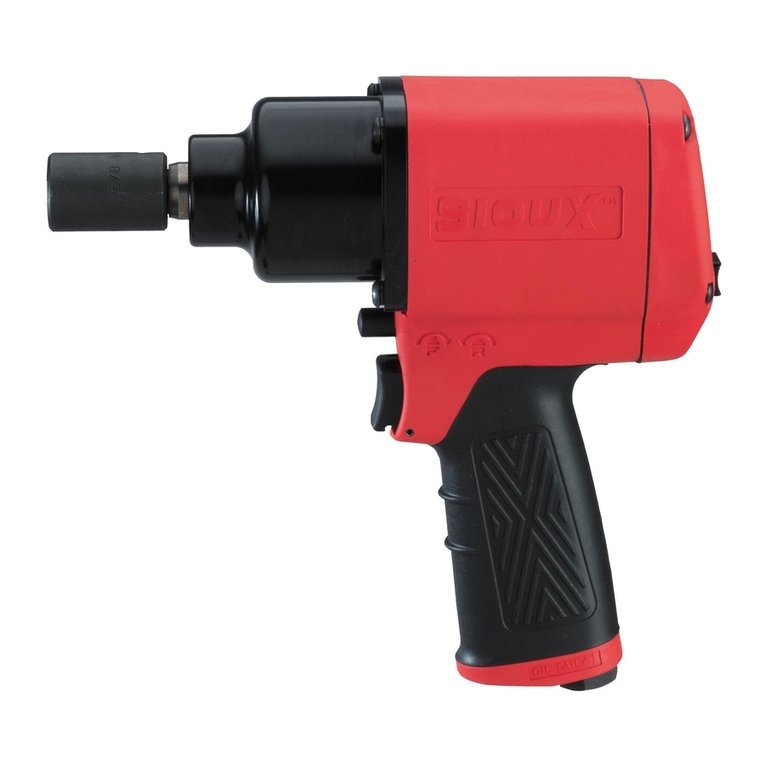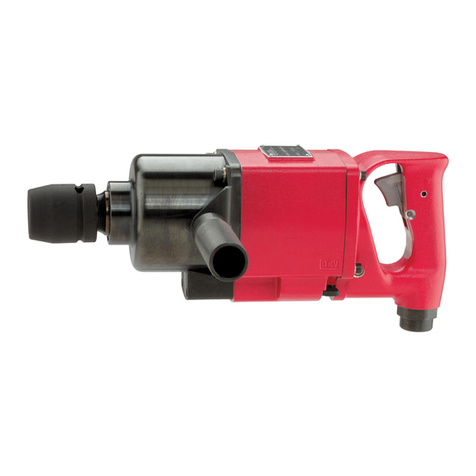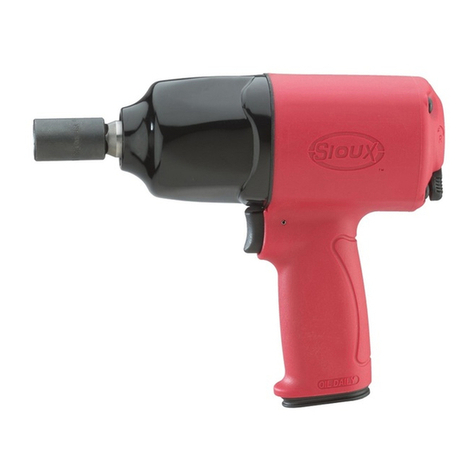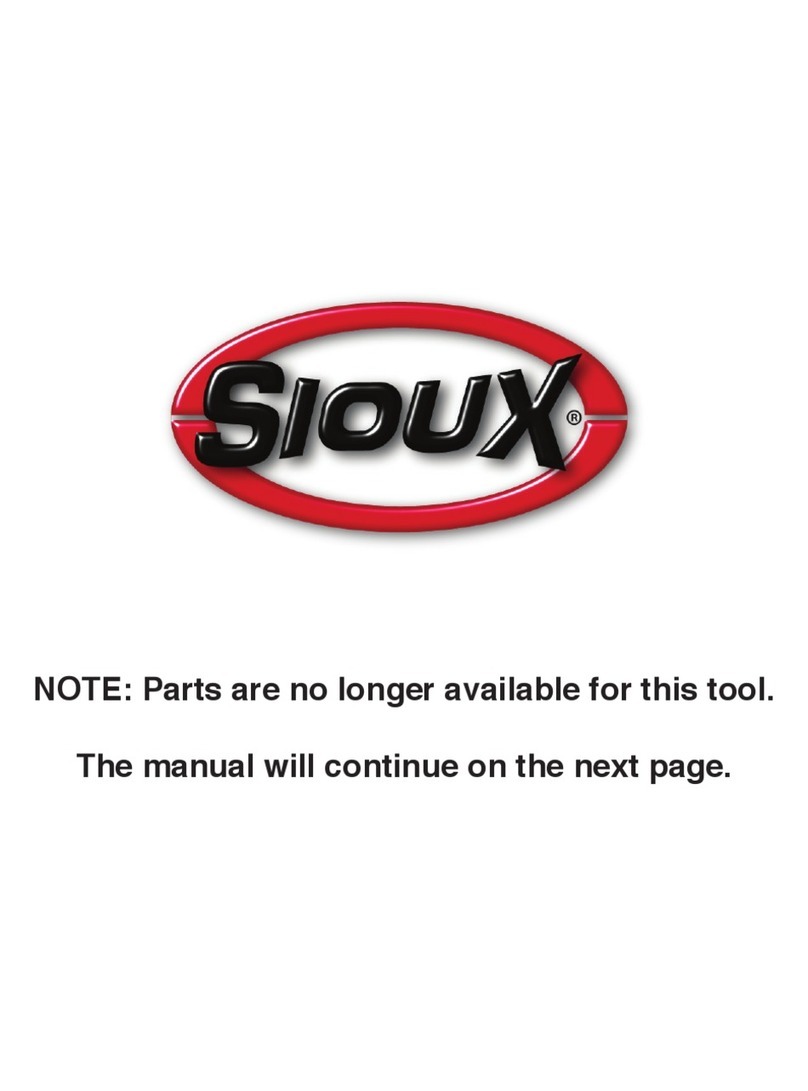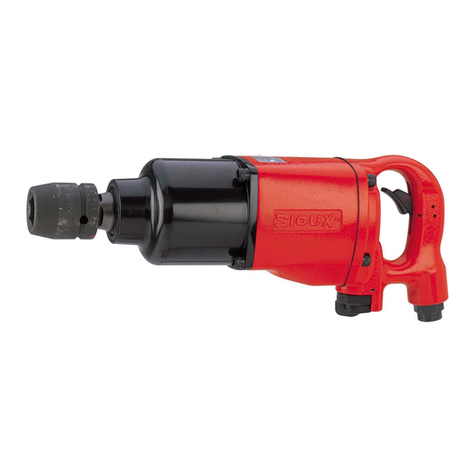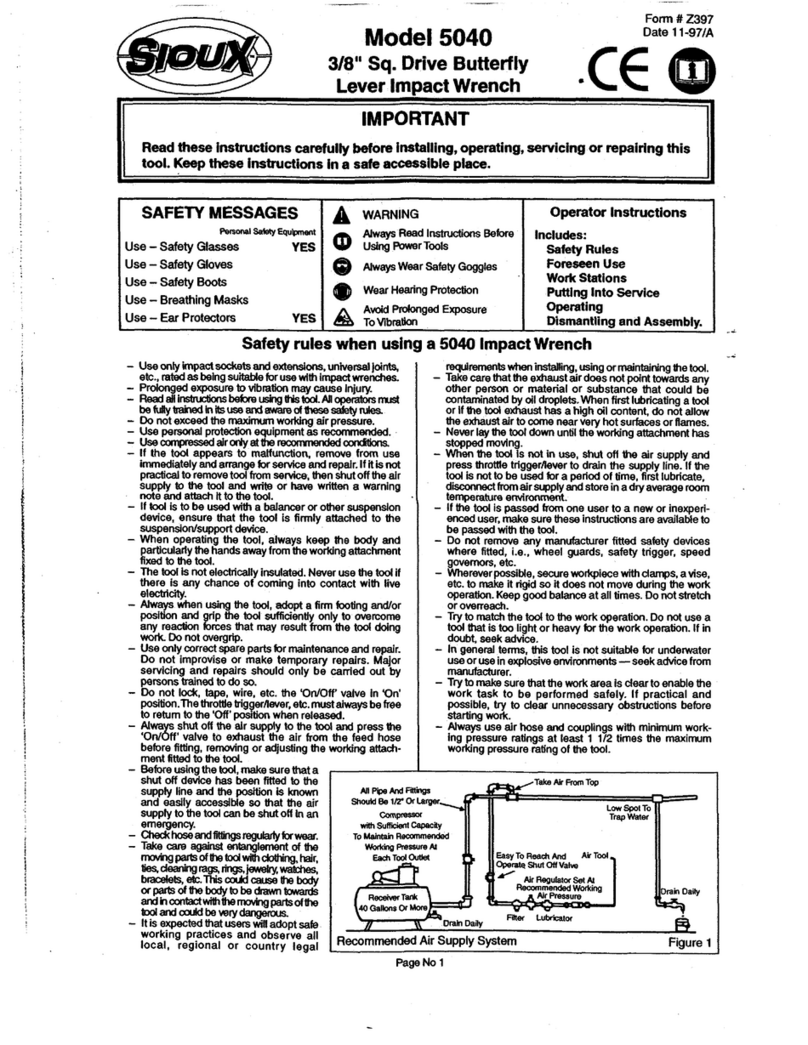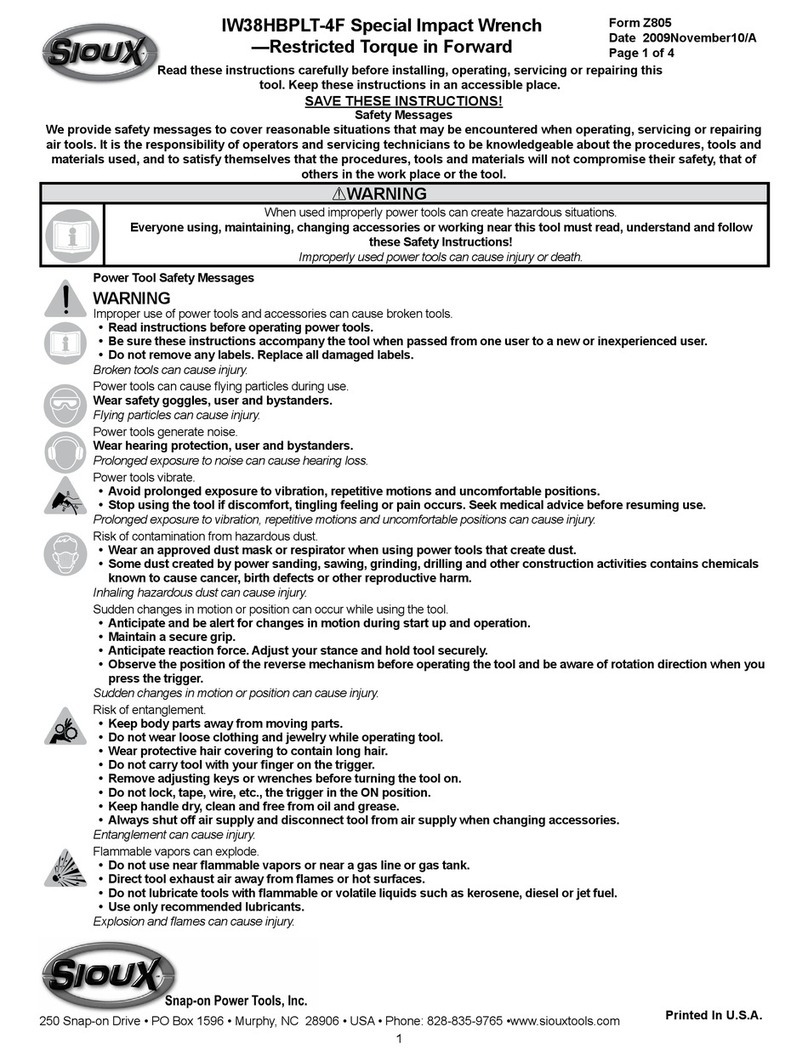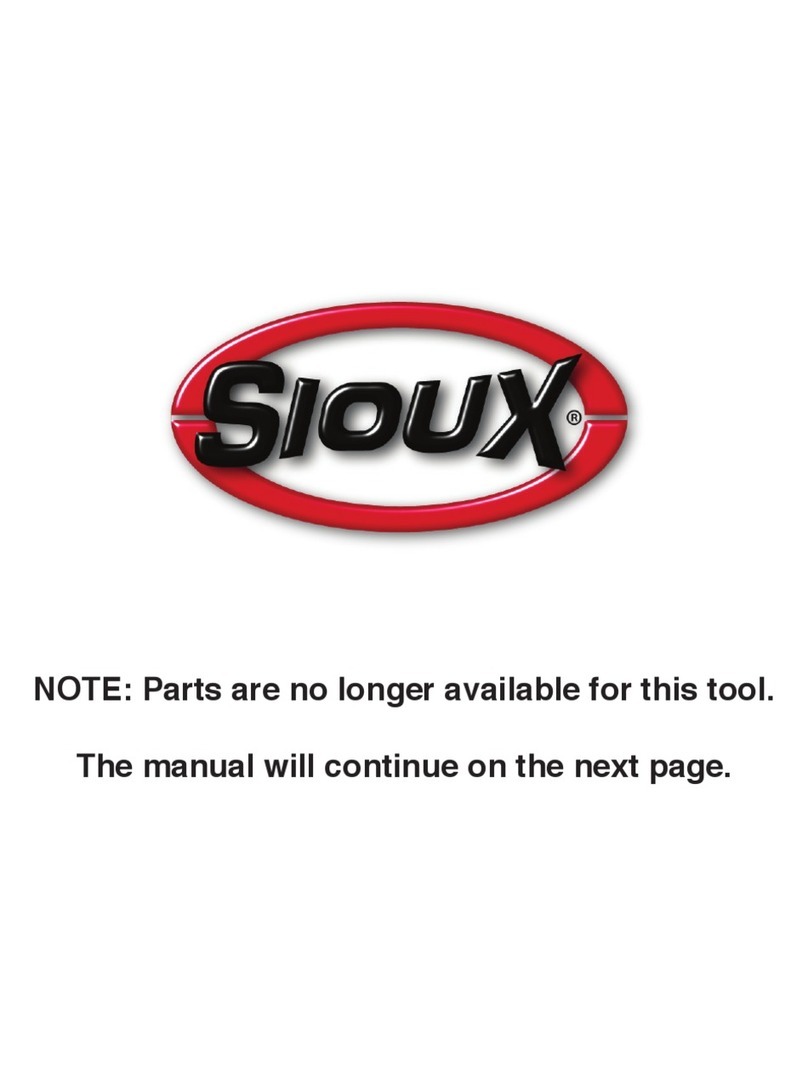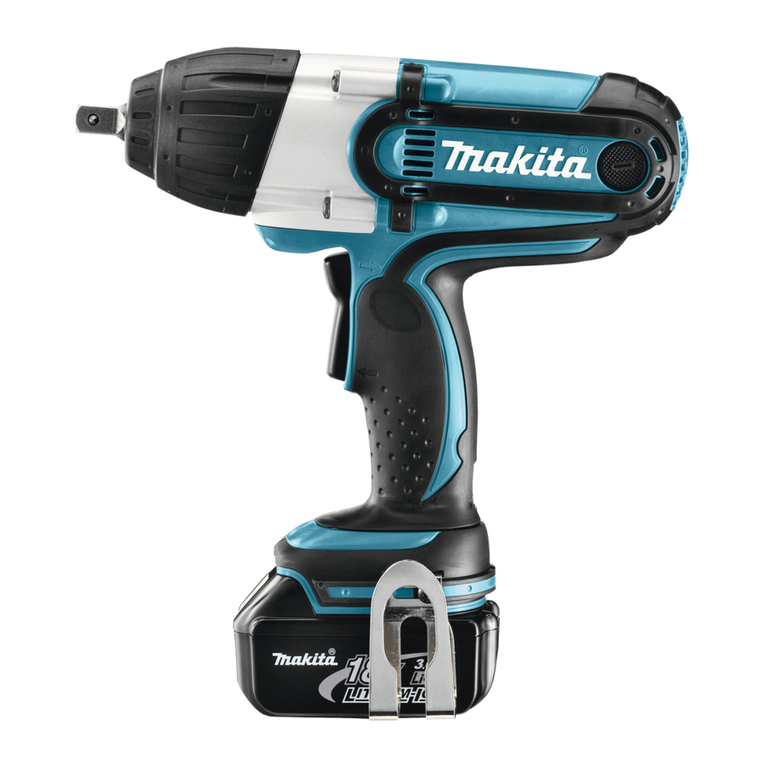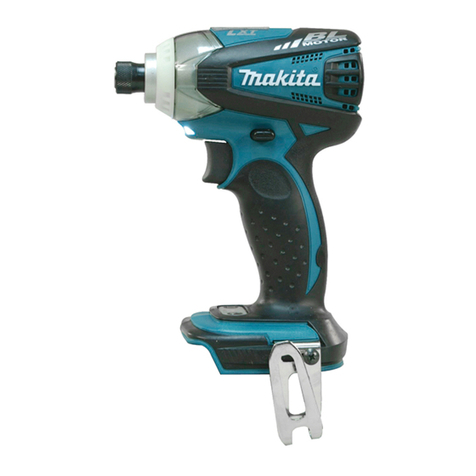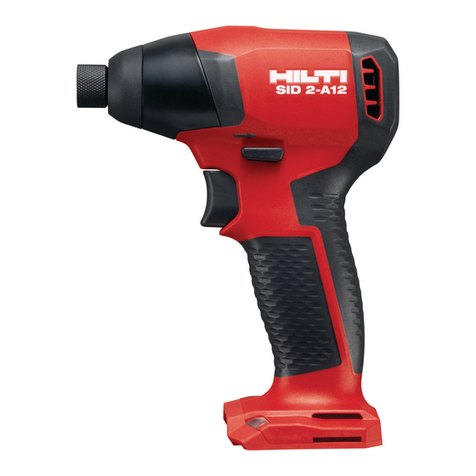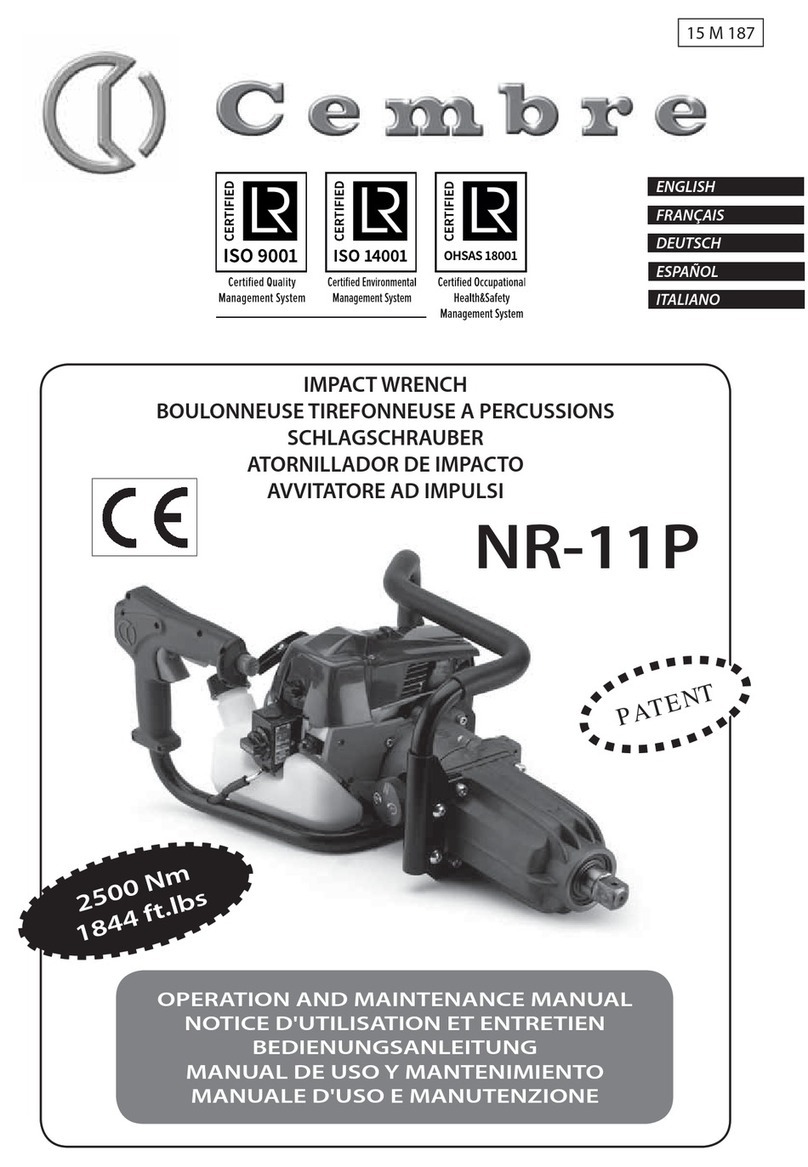-Always shut off the air supply to the tool and pressthe
'OnIOff' valve to exhaust the air from the feed hose
before fitting, removing or adjusting the working
attachment fitted to the tool.
-Before using the tool, make sure that a shut off device
has beenfitted to the air supply lineand the position is
known and easily accessible so that the air supply to
the tool can be shut off in an emergency.
-Check hose and fittings regularly for wear.
-Take careagainst entanglement of the moving partsof
the tool with clothing, hair, ties, cleaning rags, rings,
jewelry, watches, bracelets, etc. This could cause the
body or parts of the body to be drawn towards and in
contact with the moving parts of the tool and could be
very dangerous.
-It is expected that users will adopt safe working
practices and observe all local, regional and country
legal requirements when installing, using or
maintaining the tool.
-Take care that the exhaust air does not point towards
any other person or material or substance that could
be contaminated by oil droplets. When first lubricating
a tool or if the tool exhaust has a high oil content, do
not allow the exhaust air to come near very hot
surfaces or flames.
-Never lay the tool down until the working attachment
has stopped moving.
-When the tool is not in use, shut off the air supply and
press the triggerllever to drain the supply line. If the
tool isnotto be usedfor a periodof time, first lubricate,
disconnect from air supply and store in a dry average
room temperature environment.
-If the tool is passed from one user to a new or
inexperienced user, make sure these instructions are
passedwith the tool.
-
Do not remove any manufacturer fitted safety devices
where fitted, i.e., wheel guards, safety trigger, speed
governors, etc.
-Wherever possible, secure workpiece with clamps, a
vise, etc.to make it rigidso it does not move during the
work operation. Keep good balance at all times. Do not
stretch or overreach.
-Try to match the tool to the work operation. Do not use
a tool that istoo lightor heavyfor the work operation. If
in doubt, seek advice.
-In general terms, this tool is not suitable for
underwater use or use in explosive environments
-
seek advice from manufacturer.
-Try to make sure that the work area is clear to enable
the work task to be performed safely. If practical and
possible, try to clear unnecessary obstructions before
starting work.
-Always use air hose and couplings with minimum
working pressure ratings at least
1
112 times the
maximum working pressure rating of the tool.
Foreseen Use
Of
TheTool
-
IW38TBP-3PAW38TBP-2Q
The impact wrench isdesigned for the tightening and loosening of
threaded fasteners within the range as specified by the
manufacturer. It should only be used in conjunction with suitable
impacttype nut running sockets.Only usesockets which are of the
impact type.
It is allowed to use suitable extension bars, universal joints and
socket adaptors between the square output drive of the impact
wrench and the square female drive of the socket.
Do not use the tool for any other purpose than that specified
without consulting the manufacturer or the manufacturer's
authorized supplier.To do so may bedangerous.
Never use animpact wrench asa hammerto dislodge or straighten
cross threaded fasteners. Neverattempt to modify the tool for other
usesand never modify the toolfor even itsrecommended use asa
nutrunner.
Work Stations
The tool should only be used asa handheld, handoperated tool. It
isalways recommended thatthe tool is used when standing on the
solid floor. It can be used in other positions, but before any such
use, the operator must be ina secure position having a firm grip
and footing and be aware that when loosening fasteners the tool
can move quite quickly away from the fastener being undone. An
allowance must always be made for this realward movementso as
to avoid the possibility of handlarmlbody entrapment.
Putting Into Service
Air
Supply
Use a clean lubricated air supply that will give a measured air
pressure at the tool of 90 p.s.i.16.2 bar when the tool is running
with the trigger fully depressed and the air regulator in its
maximum opening flow position. Use recommended hose size and
length. It is recommended that the tool is connected to the air
supply as shown in figure 1. Do not connect a quick connect
coupling directly to the tool, but use a whip or leader hose of
approximately 12inches length. Do not connect the tool to the air
line system without incorporating an easy to reach and operate air
shut off valve. The air supply should be lubricated. It is strongly
recommended that an air filter, regulator, lubricator (FRL) is used,
asshown in Figure
1,
asthis will supply clean, lubricated air at the
correct pressure to the tool. Details of such equipment can be
obtained from your supplier. If such equipment is not used, then
the tool should be lubricated by shutting off the air supply to the
tool, depressurizing the line by pressing the throt4le lever on the
tool. Disconnect the air line and pour into the hose adaptor (6) a
teaspoonful (5ml) of a suitable pneumatic motor lubricating oil
preferably incorporating a rust inhibitor. Reconnect tool to air
supply and run tool slowly for a few seconds to allow air to
circulate the oil. If tool is used frequently, lubricate on daily basis
and if tool starts to slow or lose power. When lubricating, also
ensure that the air strainer in hose adaptor (6) is clean.
It is recommended that joint tightness of the threaded fastener
assembly bechecked with suitable measuring equipment.
Itisrecommended that the air pressure at the tool while the tool is
running is 90 p.s.i.16.2 bar.
Operating
The output of the impact wrench in prime working condition is
governedby mainlythree factors:
a) the input air pressure;
b) the time the impact wrench isoperated onthe joint. Normal time
for joints of averagetension requirement3 to 5 seconds;
c) the setting of the air regulatorfor agivenjoint at a givenpressure
operated for a giventime.
The air regulator dial (26) can be used to regulate the output of the
impactwrench if no other meansof control isavailable.It isstrongly
recommendedthat an external pressure regulator,ideally as part of
a
filter/regulator/lubricator
(FRL), is usedto control air inlet pressure
so that the pressure can be setto help control the tension required
to be applied to the threaded fastenerjoint.
There is no consistent, reliable torque adjustment on an impact
wrench of this type. However,the air regulatorcan be usedto adjust
torqueto the approximatetightnessof a knownthreadedjoint.To set
the tool to the desired torque, select a nut or screw of known
tightnessof thesamesize, threadpitchandthreadconditionasthose
onthe job. Turn air regulatorto low position,applywrenchto nut and
gradually increase power (turn regulatorto admit more air) until nut
movesslightly inthe direction itwasoriginally set.The toolisnow set
toduplicatethattightness, noteregulatorsettingfor futureuse.When
tightening nuts not requiring critical torque values, run nut up flush
and then tighten an additional one-quarter to one-half turn (slight
additional turning is necessary if gaskets are being clamped). For
additional power needed on disassembly work, turn regulatorto its
fully open position. This impact wrench is rated a 318" bolt size.
Rating must be downgraded for spring U bolts, tie bolts, long cap
screws, double depth nuts, badly rusted conditions and spring
fastenersasthey absorb muchof the impact power.When possible,
clamp or wedge the bolt to preventspringback.
PageNo2


